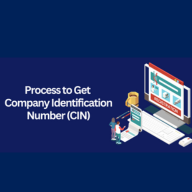ESI (Employee State Insurance) Registration & Returns filing procedure

Legal & Compliance
193 week ago — 22 min read
The Employees’ State Insurance is one of the popular social security schemes brought into force by the Central Government after the independence of India. Almost all private limited companies must get themselves registered under the ESI Act of 1948. If they fail to obtain the required enrollment using ESI registration procedure, then they are liable to face penal actions in due course of time. So, adhering to the provisions of the ESI Act is in your best interest.
Employee State Insurance is a self-financing social security scheme and health insurance plan for Indian workers, offering medical and disablement benefits. Governed by the ESI Act, 1948, it is managed by Employees’ State Insurance Corporation (ESIC) under the Ministry of Labour and Employment. ESIC is expected to manage the fund as per the rules and regulations set forth by the Act.
When ESI registration is required
ESI registration is mandatory once a company or any other entity employs 10 or more low-earning employees. According to the Act, any employee earning less than Rs. 15,000 per month needs to contribute 1.75% of his/her pay towards the ESI, while 4.75% will be contributed towards his/her ESI by the company. The ESI scheme provides tremendous benefits to the employees and has a large network of dispensaries, and hospitals throughout the country for facilitating fast and efficient medical care.
All establishments/units/factories with over 10 employees (earning less than Rs. 15,000 per month) are required to mandatorily apply for the ESI registration within 15 days of the ESI Act, 1948 becoming applicable to them.
ESI Registration Procedure: Documents Required
The following documents are required for registering under the ESI scheme:
1. A registration certificate or a license obtained under Shops and Establishment Act or Factories Act;
2. Certificate of registration (Memorandum and Articles of Association in case of a private limited company, partnership deed for LLPs, etc);
3. Certificate of registration for all entities and commencement of production for factories;
4. A list of employees with their monthly compensation, in detail;
5. A list of directors, partners and shareholders of the company;
6. The PAN card of the business and address proof of the establishment/firm;
7. Bank statements of the organization, with evidence of commencement of operation.
ESI Registration Procedure: Steps Involved
1. Once the documents are ready, the company can apply for registration by submitting the Employer’s Registration Form (Form-1).
2. A PDF format of the form is available on the website. Fill in the form and submit it to ESIC for registration on the official website.
3. Once verified, a registration number, a 17-digit unique identity will be provided to the organization. The ESI filings can be done once you receive the 17-digit number.
4. Employees registered under the scheme get an ESI card after submitting a form with photographs and details of family members.
5. Although the registration is permanent, and the number is valid for the lifetime of the company, any new changes, such as employee additions, need to be intimated to the ESI.
Documents for ESI Returns
The following documents must be maintained regularly for filing ESI returns.
1. Attendance register
2. Register for Form 6
3. Register of wages
4. Register of any accidents on the premises
5. Inspection book
6. Monthly challans and returns submitted for ESI
Filing of ESI returns
ESI filings are done half-yearly. However, before starting the procedure for filing the ESI returns, an organization (corporate entity) with 10 employees and more, irrespective of the salary mark, need to register under the ESI scheme.
Procedure for filing returns
Following documents are required for registering under the ESI scheme:
- A registration certificate or a license obtained under shops and establishment Act, or factories Act.
- MOM and Articles of Association, or a partnership deed or Trust deed, based upon the type of entity.
- Certificate of registration, commencement of production (for factories)
- A list of employees, with their monthly compensation, in detail.
- A list of directors, partners and shareholders of the company.
- PAN card of the business and Address proof of the establishment/firm.
- Bank statements of the organization, with an evidence of commencement of operation.
- Once the documents are ready, the company can apply for registration, by submitting a form: Employer’s Registration Form (Form – 1).
- A pdf format of the form is available on the website. Fill in the form, with the details asked for, and submit it to ESIC, for registration.
- Once verified, a registration number, a 17-digit unique identity, will be provided to the organization. The ESI filings can be done, once you receive the 17-digit number.
- The employees, who are registered under the scheme, get an ESI card, after submitting a form, with their family photograph and details of the family members to the employer, who then submits the same to the ESIC, for registration.
- Although the registration is permanent, and the number is valid for a lifetime of the company, any new changes, such as employee additions, need to be intimated to the ESI.
- Also, the following documents must be maintained regularly, for filing ESI returns.
- Attendance register
- Register for Form – 6
- The Register of wages
- Register of any accidents on the premises
- Inspection book
- Monthly challans and returns submitted for ESI
- ESI registrations have been made online and can be submitted through http://www.esic.nic.in/
Annual ESI filings
The ESI returns are filed half-yearly and can be done through their online portal.
To file, ESI returns online, you need to:
- Collect the user id and password from the ESIC office. The login credentials are essential for filing returns through the portal.
- Once you have collected the login id and password, click on the link to the official portal: http://www.esic.nic.in/
- Press ‘Click here to Login’ on the right-hand side of the home page.
- Enter your user name and password, provided to you by the ESIC. Click ‘Login’ to enter.
- Once you enter the portal, you will have a list of actions that can be taken, or changes or additions made to your ESI account. For instance, you can change or update employee details, report an accident, and so on.
- For filing monthly returns, click ‘FILE MONTHLY RETURNS’ on the right side tab. Before filing your monthly contributions, however, ensure that your employee details are current and updated. If not, you can edit details, before filing your contributions.
- Enter the bank details, and click ‘submit’ to file your monthly ESI contribution.
- After you have paid the contributions, you can go back to the ‘List of actions’ page, and click ‘Generate Challan’ on the right-hand tab.
- A Challan, for the payment received, will be generated. The challan is an essential document that needs to be ‘filed’ and safeguarded for inspection.
- Other than the filing of ESI returns, one can do several activities on the ‘List of Actions’ page. For instance, you can update an employee detail, add new employees, and so on. Check the website and carry out the necessary actions, before filing your ESI contributions for the month.
- The ‘Employee annual information returns’ on the left side tab will give all the details about the ESI contributions and returns filed by your company.
- If your company has more than ten employees who earn less than Rs. fifteen thousand monthly, then you must start paying for their ESI after getting your company enrolled for the same. You will have to deduct some portion of their salary towards this but a significant part of the entire ESI deposits must be contributed by your company. It is a beneficial scheme for employees because of the various medical security schemes associated with ESI.
Frequently Asked Questions
1. What is the procedure for the registration of an employer?
An employer can apply for FORM 01 within 15 days after the Act becomes applicable to an establishment or a unit.
2. Is it mandatory for employers to register under the ESI?
Yes, this is a mandatory requirement for every employer who comes under this act to register their unit/Factory/ Establishment.
3. What are the compliance requirements?
Every employer who is covered under this act is required to comply with various compliances like the deposit of monthly contribution, to file the half-yearly return and report to the ESIC authorities if there are any changes in the business activity, the address, ownership and the management, the maintenance of registers and records etc.
4. Are the benefits grants to the insured employees are transferable?
No, the right to receive any benefits under this act is not transferable.
5. Is it mandatory for the Employer to register under the scheme?
Yes, it is the legal responsibility of the employer to register their unit/Factory/ Establishment under the ESI Act within 15 days from the date when the act becomes applicable to them.
6. What is the ESI Code number?
This is the 17-digit unique identification number that is allotted to every registered establishment. This number gets generated through the ESIC portal on the submission of required information by the employer or it is generated on receipt of a survey report from the Social Security Officer.
7. Is it possible for an establishment or factory which was once covered go out of coverage if the number of persons employed by them falls below the minimum limit prescribed?
Once a factory or an Establishment gets covered under the Act, it will continue to be covered although the number of covered employees that were employed at any time falls below the required limit or there is any change in the manufacturing activity.
8. If wages of an employee exceeds Rs.15,000/- in a month, won’t he be covered and the deduction of the contribution from his wages be stopped?
If an employee’s wages (this excluding the remuneration for overtime) exceeds the wage limit that is prescribed by the Central Government after beginning of the contribution period, he continues to be an employee till end of that contribution period and therefore, the contribution is to be deducted and paid on the total wages earned by him.
9. Is the over-time done by the employee to be included for the wage ceiling limit for coverage?
No, the overtime done by the employee is not included for calculating the wage ceiling limit for coverage. But, it is included for the payment of the contribution to cover the risk during the period of overtime work and to enable receiving the cash benefits at an enhanced rate also.
10. What is the time limit for the payment of contribution?
The contribution will be paid for the employees into a bank duly authorised by the Corporation within 21 days of the last day of the month in which the contribution is due for any wage period.
11. What is the mode of payment of the contributions?
The employer is required to file a monthly contribution online through the ESIC portal in respect of all its employees after getting them registered. The amount of contributions that are to be paid are calculated by keeping a record of, the employee wise number of days for which the wages are paid & the amount of wages that were paid respectively to calculate the amount of payable contributions. The total amount of contribution (which includes the shares of the employees and employers) in respect of all the employees for each month must be deposited in any branch of the SBI in cash or by a cheque or a demand draft on generation of such a challan through the ESIC portals. The contributions can be paid online through SBI internet banking too.
12. Is there any interest on the delayed payment?
An employer who does not contribute within the time limit shall be liable to pay simple interest at the rate of 12% per annum for each day of the default or delay in payment of contribution.
13. What are the records that are to be maintained for the ESI scheme?
In addition to the Muster roll, the wage record and the books of Account that are maintained under other laws, the employer is required to maintain the following records for the ESI:-
-
The accident Register in Form-11
-
An inspection book.
-
Immediate employer is also required to maintain the Employee’s Register for the
-
employees deployed to the principal employer.
14. What is the registration of an employee?
The registration is a process of recording the information about the entry of an employee into insured employment, under the Act.
15. Why is the registration of an employee necessary?
The registration of the employees is needed to identify the employee and to provide them with the benefits under the Act which are related to the contributions paid by the employer on behalf of each of the insured employees.
16. What is an identity card?
After registration under the scheme, the employer can give a temporary identity certificate, affix employee’s photo and then authenticate it for use which will be valid for 3 months. This identity card acts as an identification for both claiming the medical benefit at dispensary/ hospital and for claiming the cash benefits at the ESI Branch Office.
17. What is the scale of the Medical Benefit?
The scale of the medical benefit includes the complete medical treatment from start to finish.
18. Do the disablement or the dependent benefits have a minimum period of work requirement?
No, there are no qualifying conditions or contributory conditions that are attached for claiming the disablement or Dependents benefit. Even if an employee meets with an employment-related injury on the first day or on any other day before he completes his first contribution period, the benefit can be claimed.
19. What are the benefits admissible to dependents?
The dependents are entitled to full medical care as and when needed, to artificial limbs, artificial appliances etc. as a part of the medical treatment.
The medical benefits are also admissible to dependents during the period the employee is claiming an unemployment allowance. In case of his death during this period, his family will continue to receive the medical benefit until the completion of those twelve months. The reimbursement of the expenditure incurred on the funeral of the deceased employee.
In case of death of an insured employee due to an employment injury, the widow, widowed mother and children are entitled to the Dependants’ benefit. All benefits due to the insured employee at the time of death are paid to the nominee.
20. Who are the individuals to be counted for the coverage of an establishment?
As long as the establishment employs a minimum prescribed number of individual it will continue to be covered under the Act even if these employees are employed at one place or any other place separate from each other, as they are engaged in the organised activity of the same establishment. Hence, all the individual including those working in branches registered office, and the sales office etc. notwithstanding the location are to be counted.
21. Who is a principal employer?
The principal employer is:
In the case of factory:
-
An owner
-
The occupier
-
The managing agent of the owner or the occupier
-
The legal representatives on the behalf of a deceased owner or an occupier
-
The manager of a factory.
-
In the case of the Establishments belonging to or under the control of the Government of India
B. The Authority Specified
C. Head of the Department (In absence of a specified authority).
In case of other the establishments: The person responsible for the supervision and the control of the establishment.
22. Who is an Immediate employer?
An Immediate Employer can be any or all of those given below: –
-
The one who executes any kind of work inside the premises of the principal employer of a factory or an establishment.
-
The one who executes the work in a factory or an establishment outside the premises which is supervised by the principal employer or his agent.
-
And also the one who gives on hire the services of his own employees to the principal employer of a factory or an establishment.
-
A Contractor
23. Who are the individuals to be covered as “Employees”?
Any individual employed for the wages in or in connection with a factory or establishment, and:
A. Directly employed by the Principal employer, in an establishment or a Factory within the premises or elsewhere, or in any other part, department or the branch of the factory or establishment.
B. Employees of the immediate employer:
-
Being employed in the premises on any work of the factory or an establishment
-
Being employed outside the premises on work in a factory or an establishment outside the premises being supervised by the principal employer or his agent.
-
The employees lent or let on hire to the principal employer on any work of the factory
-
The paid directors of a company.
The following are excluded:
-
An Apprentice
-
An employee who receives the wages above the ceiling limit for the coverage prescribed by the Central Government.
-
The ember of the Indian Armed Forces
25. What are periods of contribution and benefit?
The financial year from April to March is been divided into two six-monthly contribution periods i.e. 1st April to 30th September and 1st October to 31st March of the next year. The relevant period of benefit corresponding to each period of the contribution commences three months after end of that contribution period i.e. Jan to June and July to December (The calendar year has been divided into a two six-monthly benefits periods).
26. What is ‘Sickness Benefit’?
The scale of medical benefit includes complete medical treatment from start to finish. If an employee requires the medical treatment and is absent from work for medical reasons, the Sickness benefit is paid for the period of absence after it is confirmed by the Authorised Medical Officer, this is for a period not more than 91 days in two consecutive benefit periods (one year) at 70% of the standard benefit rate, subject to the payment of the contribution for not less than 78 days in the corresponding contribution periods.
27. What is Disablement?
Disablement is a condition resulting from an employment injury, which may render the employee briefly incapable of doing his work and it necessitates medical treatment (temporary disablement). This may reduce his earning capacity (permanent partial disability) or it may completely deny the employee of his ability to do any formwork (permanent total disability).
28. What is an ‘Employment-related Injury’?
This is a personal injury to an employee which is caused by an accident or an occupational disease arising out of and/or in the course of his employment within or outside India.
29. When do the Dependents receive Benefits?
The dependents’ benefit is a monthly pension that is paid to the dependents of an employee who dies as a result of an employment-related injury or an occupational disease.
30. What are the maternity benefit?
The maternity benefit is the cyclical payments given to an insured female employee for the specified period of absence from work, due to confinement, miscarriage or the sickness out of pregnancy, premature birth of child. The amount of maternity benefit is equal to the standard benefit rate.
31. What are the funeral expenses? Who is to be paid?
A lump sum amount not exceeding Rs.10000/- is appropriated towards the expenditure on the funeral of a deceased employee, it is paid either to the eldest surviving member of the family or if the deceased employee was without family or not living with his family at the time of the death, then the amount is paid to the person who actually performs the funeral of the deceased employee.
32. What is the Standard Benefit Rate?
The Mean average daily wages which is calculated by dividing the total wages paid during the contribution period by the number of days for which these wages were paid.
33. What are the advantages of ESI Registration?
The advantages of an ESI registration are as follows:
-
ESI offers complete medical benefits
-
It includes the dependants
-
It can be used at other ESI dispensaries and hospitals
-
All payments made are reimbursed
-
It takes into account the requirements of the disabled
-
It gives access to Medical care in ESI Dispensaries/Hospitals
Also read: What is Employees’ State Insurance scheme in India?
To explore business opportunities, link with us by clicking on the 'Connect' button on our eBiz Card.
Image courtesy: shutterstock.com
Posted by
Vakilsearch StaffGreetings! We would love to work with you and your company. We look forward to connecting with business houses and MSME's.
Network with SMEs mentioned in this article
View Vakilsearch 's profile
Other articles written by Vakilsearch Staff
Know About the 4 Types of Partnership Firms
40 week ago
Most read this week













Comments (1)
Share this content
Please login or Register to join the discussion